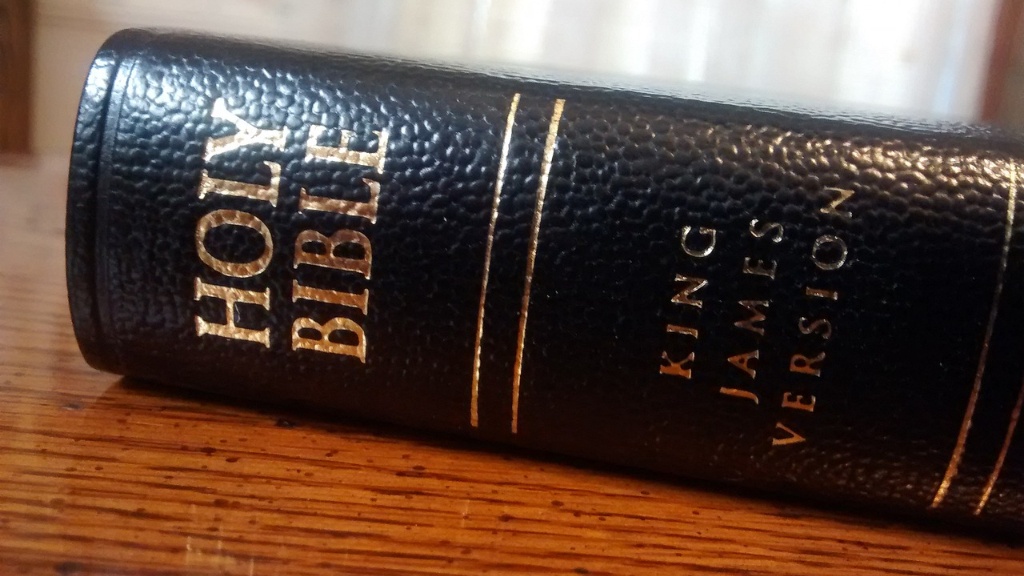Introduction
The Bible is a sacred text of immense importance in Christianity, used to guide prayer, faith, and even decision-making. In the history of the Bible, however, the text has gone through a process of translation and alteration. This process began when King James I of England and Scotland commissioned a committee of scholars in 1604 to produce a version of the Bible suitable to his own religious ideology. This version of the Bible, know as the King James Bible, or the Authorized Version, would become the most influential English translation of the Bible for centuries to come, and is still held in high regard by religious communities today.
King James’ Commission
Prior to King James’ commission of the new translation of the Bible, there had already been a number of English translations of the Bible in circulation. These included widely-used translations from the Tyndale, Coverdale, and Geneva Bibles of the 16th century. Most of these translations had been widely accepted, and circulated in both English and Continental Europe. King James, however, believed that the translations were incomplete in their accuracy and were not reflective of the Church of England’s official understanding of the Bible.
In 1604, King James I authorized a team of 54 scholars commissioned with producing a new version of the Bible. This committee included members with a variety of religious persuasions, who worked together to translate the Greek and Hebrew texts of the Bible into English. The committee was led by prominent theologians and linguists, such as Lancelot Andrewes, John Overall, and John Reynolds. The committee’s goal was to create an authoritative version of the Bible which encompassed different religious perspectives and reflected the Church of England’s interpretation of the Bible.
Compilation Process
The process of compiling the King James Bible was a lengthy and painstaking one. The scholars worked for seven years on the project and held multiple revisions of the translation over its course. The translation was compiled by taking the existing English translations and combining them together, maintaining the accuracy of the English source material.
To ensure the accuracy of the final product, the King James Version was compared to multiple ancient Greek manuscripts. The scholars also consulted original Greek and Hebrew texts to ensure that their translations of specific points in the Bible were accurate and reflective of the Bible in its original form.
Features of the King James Bible
The King James Bible differs from other versions of the Bible primarily in its style. The King James Bible is noted for its beautiful and stylized language, particularly in its descriptions of religious concepts. In addition, while the King James Bible is deeply rooted in the language and culture of 17th century England, it was also thoroughly vetted on monastic and theological grounds to ensure its accuracy to the Bible in its original languages.
The King James Bible is also notable for its great influence in popular culture. The text of the King James Bible has been widely referenced in popular music, art, and film and is seen as a cornerstone of the English language for many.
Modern Usage of the King James Bible
Today, despite the popularity of modern translations such as the New International Version (NIV), the King James Bible remains widely used. The King James Bible is still a popular choice among Christian religious communities and continues to be widely referenced in art, music, and even in everyday language. In addition, the King James Bible is held in high regard for its beautiful language and for its unusual accuracy compared to other translations.
In recent years, the King James Bible has also become increasingly popular among Christian denominations who adhere to a strongly conservative interpretation of the Bible, such as with fundamentalist sects of Christianity. These denominations are mostly attracted to the King James Bible due to its nature as a “literal” translation of the Bible – ie, a translation that does not take any liberties in its interpretation of the Bible, but instead strictly follows the text as it appears in the original languages.
Objections to the King James Bible
Though the King James Bible is still widely used and respected, there are also objections to its use. Most of these objections stem from the fact that the King James Bible is not up to date with modern translations. Specifically, many scholars point to the archaic grammar and lack of understanding of the original Greek and Hebrew text as major flaws in the King James Bible.
In addition, some scholars contend that the King James Bible is likely biased due to its heavy ties to the Church of England at the time of its publication. As a result, some Christian denominations such as Catholics and Protestants, who had strained relationships with the Church of England, choose to omit the King James Bible in favor of more modern translations.
The Significance of the King James Bible
Regardless of these objections, it is clear that the King James Bible holds an immense significance in the history of the English language and of Christianity. The influence of the King James Bible on religious thought and practice is as strong today as it was when it was first published, and its stylized and beautiful language continues to captivate audiences around the world. As such, even if it is not the authoritative translation of the Bible for all religious denominations, the King James Bible has made a lasting impression on the English-speaking world, and its effects are likely to remain for centuries to come.
Translation Challenges
When it comes to translation of the Bible, it is a difficult task to try and make the original text fully understandable in a modern language. The issues that the translators of the King James Bible faced were immense, ranging from difficulties with ancient textual conventions to limited understanding of ancient languages like Greek and Hebrew. The King James translators were able to overcome these difficulties in part due to their impeccable linguistics knowledge, but also due to their combined collaboration on the translation tasks. This collaboration, along with the support of King James I and the Church of England, enabled the scholars to create a translation that was fair in its accuracy, and beautiful in its language.
Modern Translations of the Bible
Today, translators of the Bible have a much greater arsenal of technology and expertise to work with. This includes such resources as databases of ancient language texts, digital lexicons of ancient vocabulary, and even computer-assisted translations. Despite this, though, many scholars and religious authorities still adhere to the King James Bible as an authoritative text. This is due in part to the fact that many of the passages in the King James Bible are still in use and easily understandable in modern language.
In sum, the King James Bible continues to be the authoritative version of the Bible for many religious denominations, both in its original form and in modern translations. Its great influence on popular culture and the English language means that its legacy is likely to live on for centuries to come.
The Impact of the King James Bible on Modern Christianity
The impact of the King James Bible on Christianity has been huge in the past few centuries. The Bible is seen as the ultimate source of truth and guidance on the Christian faith, and the fact that the King James Bible has become the standard translation for many church denominations means that a large portion of the Christian world has adopted it as an authoritative source. This has had both positive and negative impacts, but overall the widespread adoption of the King James Bible has allowed for a greater unity among Christian denominations, and facilitated verbal and written communication among them.
The Power of Language in the King James Bible
The language used in the King James Bible is also of importance in its legacy. While the language used in the Bible is more difficult for modern readers to understand at times, its poetic language and beautiful symbolism have allowed it to remain an iconic and influential work, even to readers who don’t fully understand its formal language. The King James Bible, due to its beautiful language, has become a point of reference in popular culture and art, and even in everyday speech and language.
Salience of the King James Bible in Modern Culture
The King James Bible remains just as relevant in modern culture today as it did in the 17th century. Its beautiful language has been quoted and referenced in countless pieces of art, music, novels, and films, and it continues to be a source of inspiration for Christian denominations and non-believers alike. Its unique combination of language and translated source material has enabled it to remain relevant for centuries, and its influence is unlikely to wane any time soon.
Conclusion
In conclusion, the King James Bible is a testament to the power of language and collaboration. Its beautiful language and its stylized translations earned it a place in the hearts of many and its legacy will live on for centuries to come. The King James Bible’s contributions to modern culture, to the English language, and to Christianity are immense and its iconic status is only increasing over time.



